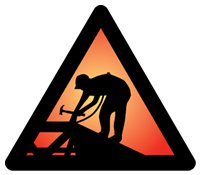 Fact. Falls kill. Falls are the number one cause of construction worker fatalities, accounting for one-third of on-the-job injury deaths in the industry. The death of a spouse and parent is an emotional hardship for a family left to grieve and often left to face an uncertain financial future.
Fact. Falls kill. Falls are the number one cause of construction worker fatalities, accounting for one-third of on-the-job injury deaths in the industry. The death of a spouse and parent is an emotional hardship for a family left to grieve and often left to face an uncertain financial future.
Fact. Falls are preventable. Deaths and injuries from falls represent a major, persistent, yet preventable public health problem. Economically, they drain millions of dollars from businesses and from the U.S. economy.
The men and women involved in construction — from CEOs to day laborers — are justifiably proud of the hard work they do. They are also aware that construction work can be dangerous. For occupational falls, construction workers face disproportionate risks. The leading fatal events in construction are falls related to roofs, scaffolds, and ladders, which combined account for roughly two-thirds of all fatal falls in construction.
Construction is responsible for nearly one out of every five work-related deaths. There were 9.1 million construction workers (including self-employed workers) in the United States in 2010, accounting for 7% of the national workforce [BLS 2011]. Of the 4,547 U.S. workers who died on the job that year, 17% (including both public and private sectors) were construction workers—more than any other single industry sector.
Construction-building, renovating, repairing, and maintaining houses, buildings, roads, and workplaces—requires skilled workers and responsible employers. There is a real need to promote the use of fall prevention practices by contractors and construction workers to turn this problem around.
A new national campaign "Safety Pays. Falls Cost" was launched on April 26, which focuses on efforts to prevent falls in construction. The campaign encourages residential construction contractors, workers, and others in the industry to work safely and use the right equipment. It focuses on the three major types of fatal falls: falls from roofs, falls from ladders, and falls from scaffolds.
● The Campaign is aimed at construction contractors, onsite supervisors, and workers and uses a variety of strategies to reach key construction audiences with three main messages:
● Contractors and workers can plan together, before every job, to work safely at heights.
● Contractors must provide the right equipment for working at heights, and workers need to use that equipment.
Several materials, including posters, fact sheets, and training tools, are available. Campaign posters and fact sheets may be ordered from the Occupational Safety and Health Association at http://www.osha.gov/stopfalls/ Additional information and tools are available from the Campaign’s Web site (http://www.stopconstructionfalls.com) and from NIOSH (http://www.cdc.gov/niosh/construction/stopfalls.html).
The campaign was conceived under the auspices of the National Occupational Research Agenda (NORA) Construction Sector Council. Subject-matter experts and key stakeholders compiled critical data and background information for the research foundation of the campaign. The research was used to develop materials tested in 15 focus groups, which were conducted in four U.S. cities over a three-week period, ending in January. Sector Council members played pivotal roles in pulling materials together for analysis and review and helped to support the focus groups. The campaign theme, image, logo, tagline, and colors were all tested in the focus groups.
Thanks to NORA, we and our partners were able to lay this necessary groundwork for the campaign with much greater speed and harmony than any of us could have accomplished on our own.
The NORA Construction Sector Council and other stakeholders are now helping to get the word out about this campaign. All who are interested are invited to partner with us to help make the campaign a success.
For more information on the campaign go to the NIOSH Campaign to Prevent Falls in Construction Web page at http://www.cdc.gov/niosh/construction/stopfalls.html. To become a campaign partner and to see more campaign materials, go to www.stopconstructionfalls.com.
Reference
BLS (Bureau of Labor Statistics) [2011]. 2010 Current Population Survey. Washington, DC: U.S. Department of Labor, Bureau of Labor Statistics, CPWR Data Center, December.

Recent Comments
In addition to the personal hardship and loss...
No one will know the answer to this...
Bad drivers don't have to ruin your day...
Healthcare workers face a number of serious safety...
In my experience, truck drivers are treated with...